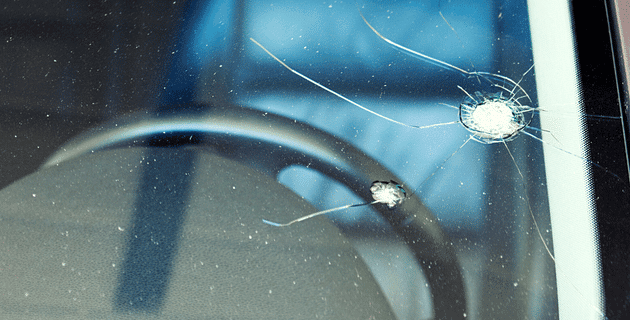
by California Casualty | Auto Insurance Info |
If you’ve ever had your windshield hit by a rock, you know the sinking feeling of watching a crack appear—and grow.
Cracks happen and sometimes they’re unavoidable. But did you know that your windshield is at higher risk for cracks in the winter? It’s true. Knowing the causes of cracks will help you protect your windshield this season. If you do get a crack, we’ve included a guide on how to handle it, which can hopefully save you an expensive repair.
All About Your Windshield
Your windshield is a protective barrier between you and the road ahead. It also provides a clear line of sight. When your windshield cracks, it compromises your safety and can limit your visibility.
Windshields are made of laminated glass, which includes two layers of glass with a piece of plastic in the middle. The layers are fused together, making them stronger than ordinary glass. Even though windshield glass is strong, however, cracks still happen.
Tiny cracks can occur from everyday driving. Cracks happen when your windshield is hit by a rock or debris. The metal frame of your windshield expands and contracts in extreme temperatures. This causes stress on your glass which can crack it over time. Finally, our own human error can cause glass to crack, such as when we pour hot water over an icy windshield. A crack between the two layers of glass can trap moisture between the layers. This can weaken the structural integrity of your windshield and cause cracks down the road.
Types of Cracks
In most cases, cracks or chips smaller than the size of a quarter are able to be fixed. But you cannot let even a tiny crack alone. Don’t ignore these small cracks or chips; they can start out small and eventually get larger, past the point of repair, and cause you to need a total windshield replacement.
Not all cracks are the same, and it’s good to know what kind you have. The type of crack determines how you deal with it.
-
- Basic crack – The simplest crack is a line that is not near the edge of the windshield. If the line is less than 1 inch long and doesn’t have other lines extending from it, it can be repaired.
- Floater – A crack that occurs away from the windshield edge is known as a floater. These can spread quickly.
- Edge crack – If the crack is near the edge of your windshield, chances are that the entire windshield needs to be replaced.
- Chip – If a small piece of glass is missing, you have a chip. A chip less than 1 inch in diameter, without any cracks coming from it, can be filled or repaired.
- Star – If your crack looks like a small chip with tiny cracks extending from it, you have a star crack. This type of crack could possibly be fixed but the repair may be visible.
- Bulls-eye – If your crack resembles a circular bulls-eye target, you have more extensive damage than it appears. This type of crack usually requires a full windshield replacement.
How to Avoid Cracks
Remove ice responsibly. In most places in the U.S., you’ll be dealing with icy windshields this winter. You need to clear the ice in order to drive. Glass can be brittle in cold temperatures, so you will want to avoid any sudden temperature changes.
-
- Do not throw hot water on your windshield. Hot water will refreeze, and surprisingly, it does so faster than cold water. Don’t use room temperature water either. This will still be a temperature extreme from the icy conditions and can crack your windshield.
- Skip the vinegar and water mixture. Vinegar doesn’t work well when there is already ice there. It also is an acid that can eat into glass causing pits.
- Don’t use a propane torch, hair dryer, or cigarette lighter. These are extreme changes in temperature and can crack the glass.
- Do not use a knife or blade that will chip or scratch your glass.
- Don’t hit the ice. It doesn’t take a lot of impact to cause damage to the glass.
- Do not use keys, snow shovels, or spatulas. They can all leave scratches and grooves.
- Do warm your car up slowly. Use your car’s heater and defrost settings. Wait until your car is warm to turn your car’s defrosters on high.
- Do use a plastic ice scraper. Ice scrapers are among the must-carry items in your car in winter.
- Do use a liquid deicer if you would like.
Avoid flying debris. While rocks and debris can hit your windshield almost anywhere, you can take steps to keep your car away from this potential hazard.
-
- Don’t drive over gravel roads, but if you must, keep a safe following distance from the vehicle in front of you.
- Don’t follow construction vehicles too closely.
- Don’t drive in hailstorms if you can help it. The best strategy is to find covered parking while it’s hailing. If you must drive in a hailstorm, slow down to lessen the impact.
Park in protected places. Mother nature can be tough on our windshields. Keeping your vehicle in a place with a constant temperature and away from wind, winter storms, snowstorms, and extreme weather can help to protect the windshield.
-
- Avoid exposing your windshield to extreme temperatures. If it’s going to be very cold, park your car inside if you can.
- You also can cover your car, which will help to protect your windshield wipers from freezing and cracking. You don’t want damaged wipers to scratch your windshield.
- If you can, park your car inside a garage during the winter months.
Periodically inspect your windshield. You may not even be aware of tiny cracks in your windshield. The sooner you catch them, the sooner you can address them.
-
- It’s hard to notice cracks while you’re driving. Make it part of your winter routine to periodically inspect your windshield when you get in or out of your car.
- Keep the windshield glass clean. This will help you to notice small cracks and chips.
- A winter car wash can help, but don’t run your car through one if there are any windshield cracks.
- Replace your wiper blades before winter hits.
- Don’t drive around with a crack. The sooner you take care of it, the less expensive the repair will likely be.
What to Do if You Get a Crack
Drive carefully. Drive over bumps slowly. Don’t whip around corners or cause any vibrations that could make damage worse.
Guard against dirt and moisture. While you are waiting for the repair, keep the crack clean and dry. Dirt and moisture can make repairs more complicated. (Pro Tip: Even window washer fluid can stain the crack so use a drop or two of dishwashing soap on a damp cloth.)
You only have one chance to get it right. DIY options include inexpensive windshield repair kits.
Most kits aren’t high quality and won’t last long-term. Some folks have tried to seal the crack with household items like superglue or nail polish remover. Don’t even consider that. It will prevent you from getting a professional repair.
Contact an auto glass repair specialist. California Casualty works with Safelite on claims for cracked windshields. Many glass repair providers offer same-day service and can come to you. A technician can fix repairable cracks in a matter of minutes. Most comprehensive auto insurance policies cover the cost of fixing small chips and cracks in your windshield. Even without insurance, a windshield repair is much less than a replacement.
This article is furnished by California Casualty, providing auto and home insurance to educators, law enforcement officers, firefighters, and nurses. Get a quote at 1.866.704.8614 or www.calcas.com.
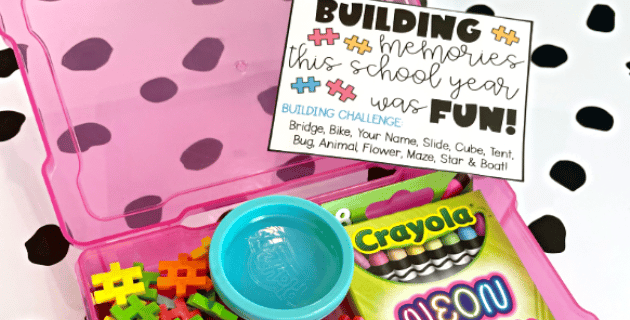
by California Casualty | Educators |
Written by Casey Jeffers, Owner of Fair Winds Teaching & MSEA Second Grade Teacher The hustle and bustle of the end of the school year is like no other. It comes so quickly; in March I think about all the awesome things I still want to accomplish for the school...
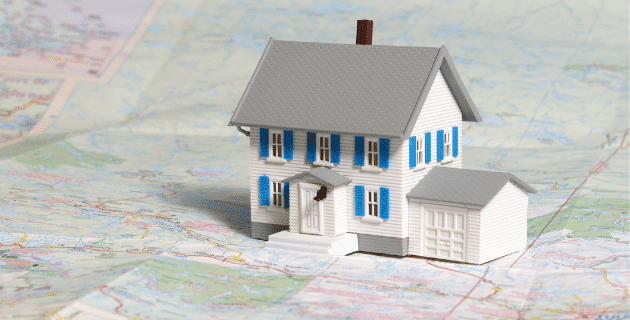
by California Casualty | Homeowners Insurance Info |
Droughts, fires, floods, and storms – natural disasters can wreak havoc on your home and your property. Yet, many of us live in regions that are prone to them. If you live in such a place – or if you’re considering moving into one – how do you protect your investment?
Two ways: 1. Know your risks. 2. Have the right protection.
Know Your Risks: Is your region prone to a natural disaster?
A natural disaster can happen anywhere at any time. Weather patterns in a region are a good predictor of whether your area will likely be at-risk now and in the future.
The average weather pattern in a place over several decades is called a climate. An area’s climate affects the weather and the type of natural disaster(s) they are prone to. For example, we know the West has a very dry climate that causes frequent wildfires; the Northwest is known for its wet weather, which could lead to severe flooding. The Midwest is associated with brutally cold winters which can lead to devastating winter storms. And the warm coastal climate of the South East is the prime environment for hurricanes.
If you want to know the most common weather risks to your home or in your area, you can do a free climate risk assessment on ClimateCheck.
Know Your Risks: 6 Common Disaster Risks
Disasters come in many forms, from tornadoes and hurricanes to floods and droughts. Following are six types of disaster risks that may affect your home or property.
1. Heat Risk
Extreme heat occurs when there is high heat and humidity, and temperatures exceed 90 degrees for a period of days. In terms of disasters, extreme heat can sometimes lead to fires. (See the Fire Risk section for more detail.) U.S. counties with the greatest risk for heat include 37 counties in the south with a third of them located in Florida.
2. Drought Risk
Droughts occur when there is not sufficient precipitation. Not only does this put a stress on the water supply, but it can also have a severe impact on your landscaping. Soil dryness can also lead to settling issues with your home’s foundation. Unfortunately, for most homeowner policies, settling or shrinking is not a covered loss. U.S. counties with the greatest risk for drought include 34 counties in the west, with 21 in Colorado.
3. Fire Risk
When drought occurs and heat becomes extreme, the conditions are right for a fire to start. Wildfires can destroy your home or community. Wildfires account for about $16.5 billion in damages annually in the U.S. In the event of a fire caused by a natural disaster, your home’s dwelling coverage will pay to repair or rebuild your home up to your policy limit. U.S. counties with the greatest risk of fire are located in the West.
4. Flood Risk
This includes coastal flooding as well as flooding from surface water or nearby lakes and streams. Rising sea levels and extreme weather have contributed to flooding, which cost as much as $20 billion annually in the U.S. A traditional homeowner’s policy does not cover flooding. For your home to be covered you will need to purchase a separate flood policy. U.S. counties with the greatest risk of flooding are mostly located in the south, including Florida, Louisiana, and North Carolina.
5. Severe Storm Risk
Storms include high wind, wet or snowy weather events. These could be hail storms, hurricanes, tornadoes, or other types of destructive weather. Storm damage in the U.S. averages about $17 billion annually. Your homeowner’s policy may cover some aspects of storm damage, including hail, wind or lightning. If you are unsure, check with your insurance’s Service Department to see what is covered under your policy. U.S. counties with the highest risk of storms are located in the Northeast or Southeast.
6. Earthquake Risk
Earthquakes typically occur along fault lines and can cost millions in damages. In the U.S., they are more common in California and Alaska. A pair of earthquakes struck Ridgecrest City, California, in 2019, causing nearly $40 million in damage. Importantly, while earthquakes cause significant damage to buildings and property, they are not covered by the typical homeowner’s policy. In some states, however, you can purchase coverage for earthquakes for an additional premium.
Have the Right Protection: Do you have enough insurance for a disaster?
If a natural disaster happens in your community, and your home and property are damaged, you want to be able to rebuild. Yet, many homeowners find themselves having to fund portions of the rebuilding process because they’re underinsured. Here’s what you need to know.
-
- During a disaster, your neighbors will be rebuilding at the same time. When demand exceeds supply, that can drive up prices for materials and labor. These increased costs usually aren’t factored into homeowner’s coverage, and you have to pay out of pocket for the difference. Some policies carry a mandatory endorsement added to the policy that provides an additional 25% of coverage to cover these additional costs. There is a fee for this endorsement, known as extended repair/replacement cost.
- You may be required to meet new and stricter building codes when you rebuild. You may use up to 10% of Coverage A for the increased costs you incur due to the enforcement of any ordinance or law. For an additional premium, increased amounts of coverage can be purchased via an endorsement.
- If your area is prone to floods or earthquakes, you will want those additional policies. Your homeowner’s policy does not cover these events. Keep in mind that there is a 30-day waiting policy for flood insurance.
- Rebuilding a home can take a long time. Your policy’s living expense coverage will provide a flat percentage toward living costs, usually 30% of the Coverage A amount. Some states have time limits (e.g. 12 months) on when you can use that coverage. Plan to cover those additional expenses out of pocket.
You want to be fully prepared for a disaster, and not just with a disaster plan. Talk with your insurer about your home and property to ensure that you are fully covered, no matter which location you call home.
This article is furnished by California Casualty, providing auto and home insurance to educators, law enforcement officers, firefighters, and nurses. Get a quote at 1.866.704.8614 or www.calcas.com.
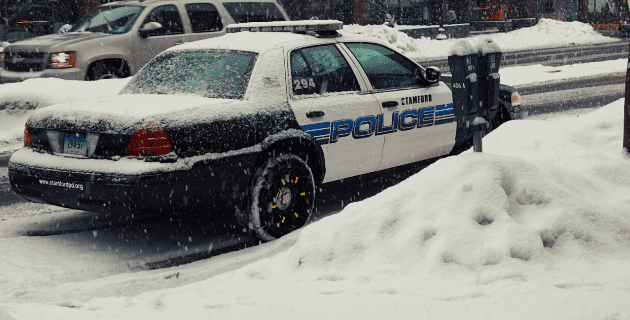
by California Casualty | Peace Officers |
It’s cold out there, and if you’re a cop on the beat this winter, you’ll definitely feel it. While winter weather may be uncomfortable, exposure to the cold can be deadly, and frostbite can be permanently disabling.
Take steps to make sure you’re safe and comfortable this winter with a cold weather survival kit for your patrol vehicle. Most of these items you can find inexpensively locally or online, or you may already have them on hand. So the next time the temperature dips, and you’re driving around this winter, you’ll be ready.
1. Thin wool or fleece gloves – Use these as your backup pair in case you need them, or as additional insulation under your heavy gloves. Inexpensive military surplus glove liners work well because they don’t take up much space. The wool keeps you warm even if it gets wet.
2. Hand warmers – These warmers are oxygen-activated. You can get ones that last for 12 hours, which will cover your shift. You can place them in gloves, boots, hats, vests, or pockets for an extra boost of warmth when you’re patrolling, directing traffic, or standing around in the cold.
3. Snowmobile balaclava – This windproof headwear is thin and stretchable, so it easily fits under hats and works well with uniforms. It’s made to wear under a snowmobile helmet, and it effectively shields your head, face, and neck.
4. Plastic trash bag – Trash bags have great insulating properties, which makes them ideal for covering up a tear in a uniform. They also are effective barriers from wet, icy or snowy surfaces if you might have to sit down on one.
5. Glow stick necklaces – Snap these necklaces and they give off a glow that can be seen at night. If you’re ever about to fall unconscious, wrap one around your arm or attach one to your neck. You can also use them in a pinch if the battery in your flashlight dies. These sticks will glow for 8 to 12 hours.
6. Packets of instant coffee, hot cocoa, tea bags – Pack your hot beverage of choice for a quick pick me up. Just add hot water, available at most convenience stores. A hot beverage can help you maintain body temperature on frigid nights and keep you hydrated.
7. A large zipper food bag or vacuum pack bag – Store your kit in a waterproof bag that’s easy to carry. A large zipper food bag is light and foldable. You also could pack everything in a vacuum-sealed food bag. Whatever you use, make sure your cold weather survival kit is with you wherever you go this winter.
More cold weather tips
Working in the cold is an added stress for law enforcement. Make sure you are fully prepared.
- Police uniforms are not necessarily made for warmth, and you may not even be issued a winter version. Make sure you’re protected with good outerwear and base layers, especially if you’re working in conditions under 30 degrees Fahrenheit.
- Insulated underwear comes in different weights. Choose the weight you need based on the weather. Remember that a good base layer is odor resistant, quick to dry, and soft on the skin.
- Insulated duty boots protect your feet and keep them warm during the toughest conditions.
- Warm socks made for the weather will help. Wool retains heat even if wet and lets your feet” breathe.”
- Insulated hats prevent heat loss through your head.
- Warm gloves protect your hands but can affect your fingers’ ability to move. Make sure you practice with your gloves on as you deploy your baton, TASER, OC, handcuffs, magazines and pistol.
- Equipment can freeze and malfunction due to the cold. Keep a small black sack with hand warmers and put your radio in it to keep the battery from freezing. Wrap your flashlight with hockey friction tape so the cold metal won’t stick to your skin if you touch it with bare hands. Put a coat of silicone inside your holster to more easily draw your weapon, and do a half-draw if you’re out in the cold for a period of time.
- You depend on your cars to keep you warm. Snap-on grille covers help keep the cold air outside from coming in.
Stay safe out there.
This article is furnished by California Casualty, providing auto and home insurance to educators, law enforcement officers, firefighters, and nurses. Get a quote at 1.866.704.8614 or www.calcas.com.
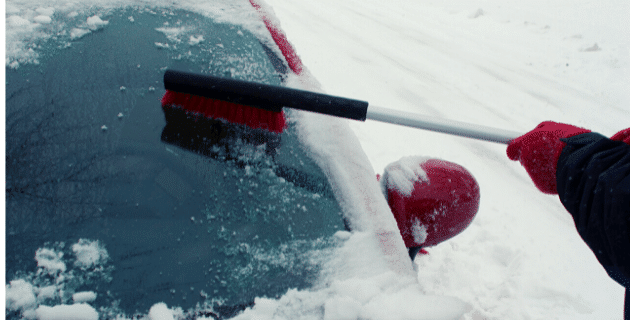
by California Casualty | Auto Insurance Info |
Winter driving presents its share of challenges, from icy road conditions to car batteries that strain due to the cold. If you live in a region where the temperatures dip down low, you could be sitting in a freezing car for hours if it breaks down.
Thankfully, some forethought and preparation can help. Make sure you’re fully prepared for whatever winter throws at you and stock up on these must-carry items for your emergency winter car kit this season.
#1: Ice scrapers, snow brushes, and a foldable shovel
It’s important to clear your whole car before you drive. Snow and ice can slide from your vehicle’s roof and obstruct your view while driving. It also could fly off and hit another car. Choose scrapers and brushes with long handles that allow you to reach the top of your vehicle. Stock several and the kids can help, too! Get a portable snow shovel too, one that folds so it takes up less space. Then use it to dig your car out as needed.
Tip: You can also use the shovel to add fresh snow or dirt around your tires to help them grip.
#2: A bag of sand or kitty litter
Your car may get stuck in the snow or be unable to move past an icy spot. Pour some sand or kitty litter over your tires and/or on the ground for extra grit to help with traction.
Tip: You can put your car’s floor mats down in front of your tires to get your car out of slippery situations. Watch the video from Firestone.
#3: Hazard triangles and LED flares
When you break down on the side of the road, you want to be seen—by other vehicles and by emergency personnel who can assist you. That’s the purpose of the hazard triangles and LED emergency flares. These are especially important when there is reduced visibility such as at night or during snowstorms.
Place the reflective hazard triangles behind your vehicle starting at 10 feet and going as far as 100 feet. Road flares have traditionally been used to mark sites for emergency responders. Rather than the traditional flares that light like a match and ignite, choose the modern version—a LED safety flare. They are designed to be waterproof, shatterproof, and crushproof and some are even magnetic and can stick right to your car.
Tip: To reduce the drain on your battery, use your car’s emergency flashers only if you hear vehicles approaching.
#4: A flashlight (and some extra batteries)
A flashlight can help you find things in the dark. It also can be used to signal passing cars. Choose an LED flashlight that offers plenty of light. If you can, pack several flashlights so that everyone in the family has one. Store batteries backward in the flashlight to prevent the light from accidentally switching on and burning out. Keep a spare set of batteries on hand just in case.
Tip: Pack some glow stick necklaces for the kids. They’re also great fun and an easy way to find everyone in the dark.
#5: Jumper cables and a battery charger
Low temperatures put an additional strain on your car’s battery. In fact, the freezing cold can turn a weak battery into a dead one overnight. If your car breaks down due to a dead battery, jumper cables can help. These cables allow you to charge your car’s battery from another car’s. You also may want to invest in a portable battery jump starter. These devices jump your battery without another car. They also can power your other devices such as cell phones or tablets.
Tip: Find out much battery life you have left with a free battery test at Firestone.
#6: A cell phone charger and portable power bank
Your cell phone is your connection to the world—and to help. Keep it as charged as possible by having a charger in your car. However, if your car doesn’t start, the car charger won’t do much good. Be sure to pack a portable battery or power bank.
Tip: If you’re stuck and your cell phone is losing power, change your outgoing message to your current location, time and date, and any other important details. That way, if your cell phone stops working, callers will get that message.
#7: Blankets and cold weather clothes
Keep a few blankets or sleeping bags in your trunk. If you want to save on room, choose pocket-size heat-reflective blankets. Then, stock some warm clothes for every member of the family: old sweatshirts, thick pants, warm socks, boots, mittens, and warm hats. Add some hand or feet warmers, which could provide much-needed warmth in an emergency.
Tip: Don’t run your car’s engine unless you are sure the exhaust pipe is free of snow. Snow can plug your vehicle’s exhaust system and cause deadly carbon monoxide gas to enter your vehicle.
#8: Snacks and water
If you’re spending any significant time in your car, you’ll want food and water. Keep water bottles and non-perishable snacks in your car through the winter. Consider these ideas: prepackaged trail mix or nuts/seeds, dried fruit, granola bars, chocolate, dry cereal, crackers, cookies, peanut butter (or other nut butters), rice cakes, pretzels. Choose kid-friendly snacks in case the kids are with you; you’ll enjoy them even if they’re not there.
Tip: For a more substantial snack, pack canned food that can be eaten cold and a can opener. Don’t forget the plastic utensils.
#9: Entertainment
Keep the kids busy with some games and activities. This will help keep them from feeling stressed and it will help pass the time. Pack a travel game bag. Include decks of cards, puzzles, coloring books and crayons or paper for older kids, and travel games. Sing songs, tell jokes, and keep the time as light-hearted as possible.
Tip: Make it a game. Take a poll on how long it will take to get home or what the tow truck driver will look like.
#10: First Aid Kit
A first aid kit is especially needed in winter because emergency response times may be longer due to icy or snowy conditions. You can buy one or make your own. Include bandages, gauze, adhesive tape, antibiotic ointment, scissors, saline solution for eye washing or cleaning wounds, aloe vera to treat minor burns, an antihistamine for allergic reactions, and anything else your family may need.
Tip: Add baby wipes, which will help if you or the kids have to go to the bathroom outdoors in nature. A garbage bag can also be a makeshift toilet if need be.
You can save some steps and buy emergency roadside safety kits that combine many of the items on this list.
Finally, should you have a winter-related accident or incident, know that your collision and comprehensive insurance will help protect you.
Safe travels.
This article is furnished by California Casualty, providing auto and home insurance to educators, law enforcement officers, firefighters, and nurses. Get a quote at 1.866.704.8614 or www.calcas.com.





